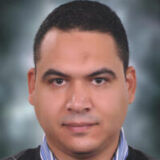What is openEHR?
‘openEHR’ is just an eHealth application. It offers open specifications and clinical models taking into consideration the concepts of standardization and interoperability in transforming healthcare information.
In 2003, the openEHR Foundation established the openEHR community which introduced openEHR as an open-source application.
The targets of the openEHR community are that of any government thinking of establishing a national ehealth project. The main targets are to enforce the healthcare quality standards, enhance the process of healthcare monitoring and improving the management and accessibility of healthcare records, improving the process of data transfer between different healthcare providers and serving the process of healthcare research.
The strategic plan of openEHR is based on four ‘programs’ which are focused on specifications, clinical modeling, software, and education.
The openEHR specifications include healthcare information models like EHR, demographics, archetypes formalism, datasets, open API specifications. Besides, a portable query language was added.
The automated generation of schemas from models guarantees perfect integration. If messages were to be transmitted manually the process was going to be suspicious.
What are openEHR Archetypes?
All the stakeholders of openEHR collaborated to produce openEHR architecture. Clinicians and researchers participated in the development of a formalized content specifications. Each archetype can be considered a specification for a clinical concept.
What is the openEHR Clinical Knowledge Manager (CKM)?
The openEHR Clinical Knowledge Manager (CKM) is a global clinical knowledge resource available online.
CKM attracted many clinicians and researches to participate. Most of the participants have a common goal, which is to establish an open platform where clinical informaticians can safely exchange healthcare information regardless of language or geographic barriers.
CKM maintains the quality of openEHR, through a hermetic review and publication process for the archetypes and templates.
If you are interested in the process of clinical content modeling, you can participate in creating a new archetype or editing any of the available archetypes.
openEHR Archetypes and Big Data
openEHR archetypes are like a treasure for Big Data specialists. They can yield thousands or millions of records for data mining purposes or for building training datasets. The result data will almost be formalized and standardized.
The task is not that easy, as sometimes they need to populate archetypes data into spreadsheets where they can map the archetypes data to other databases.
Archetypes are defined using a language called Archetype definition language (ADL).
If you have data populated from a certain Health Information System (HIS), try to tabulate them into an excel sheet and define the data type for each column.
Archetype has a tree structure that has a path that should be identical to the column name. After validating the similarity of data types, you can map your data to that specific archetype.
Mapping a multiline tree structure to a single row in an excel sheet may need some coding or simply a specific tool where each node in the tree structure is represented by a single line. This line is then mapped to the corresponding row in your data.
There is a nice tool that could help this mapping and could cast your data into one flat CSV file that is compatible with openEHR archetypes standards. You can check this tool on GitHub here.
You can try this yourself. On the openEHR platform search for the “Blood Pressure” archetype on the search field on the right, then try to navigate the different tabs like the mind map tab and the ADL tab. You can then export the data into one of the 2 available formats (XML and ADL).

Figure 1: Blood Pressure Archetype Mindmap

Figure 2: Blood Pressure Archetype Definition Language (ADL)
If you like to apply this methodology and this tool to apply the blood pressure archetype and need real-life validated data to have a good hands-on experience, try to download data from John Snow Labs Catalogue. John Snow Labs catalogue includes 2 healthcare nlp datasets that contain blood pressure data. The first dataset entails data about Global Burden of Hypertension And Systolic Blood Pressure while the other contains data about Mean Systolic Blood Pressure for all countries in 1990 and 2015.
If it is difficult for you to do this on your own or your research management plan has a tight schedule, it will be better for you to schedule a call with one of the specialized organizations to get your data formulated according to the openEHR standards. Again, John Snow Labs could be an ideal place for you.
By casting healthcare data into a unified format compatible with openEHR archetypes, organizations can unlock the full potential of Generative AI in Healthcare, enabling more effective integration with systems like a Healthcare Chatbot to enhance patient support and streamline healthcare processes.






























